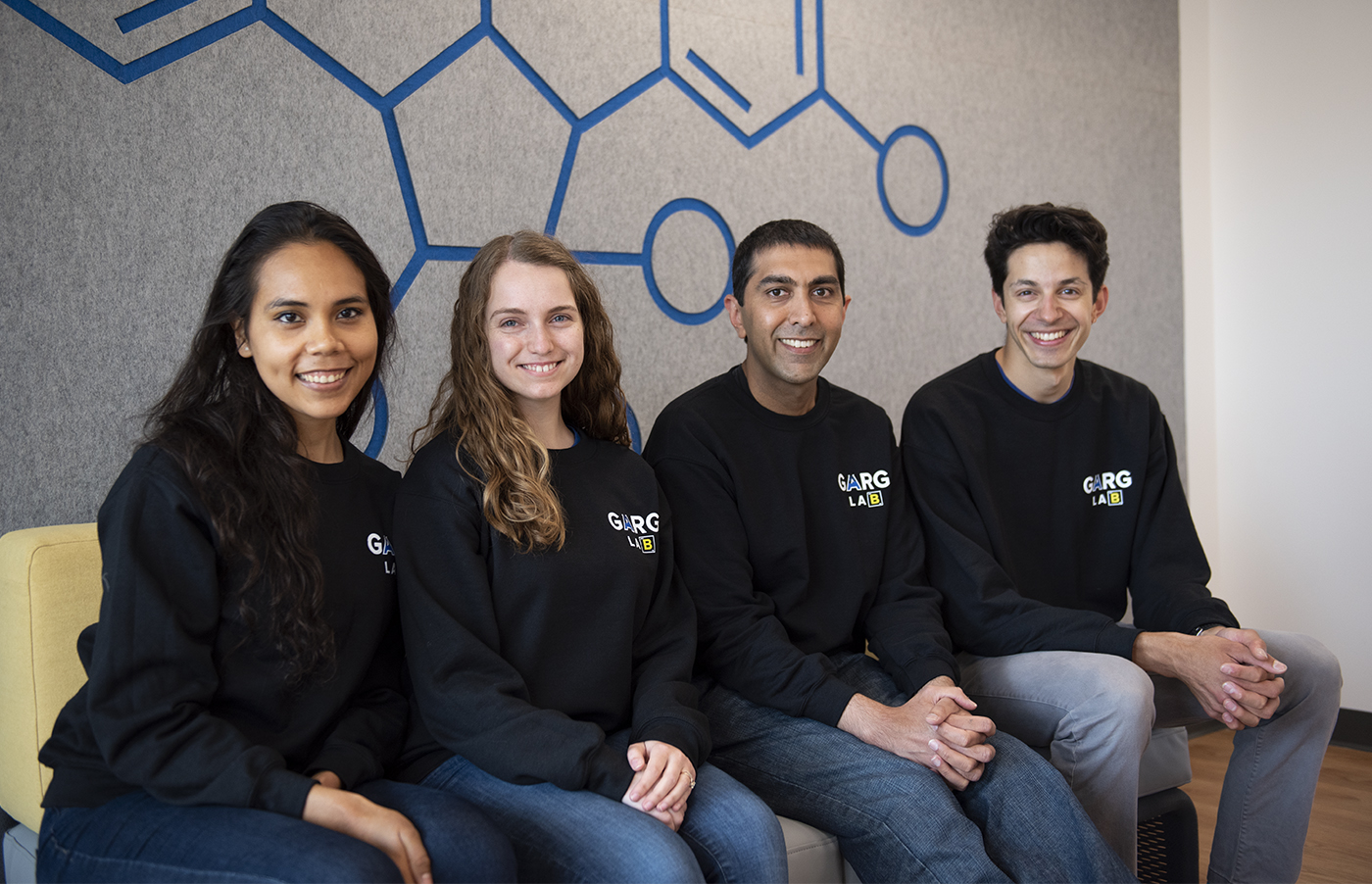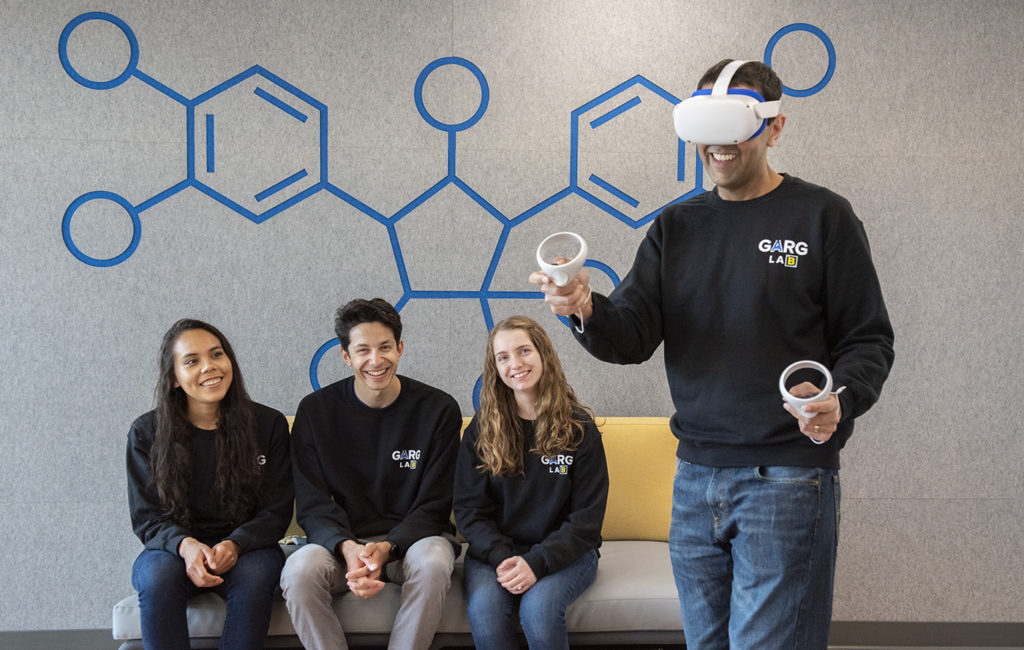UCLA lab creates virtual reality app to help students with organic chemistry

Organic chemistry can be challenging for students to learn at first. A team of UCLA researchers hopes to change that with their new app that can visualize molecules using virtual reality. (Jason Zhu/Daily Bruin staff)
By Natalie Weber
May 10, 2021 12:30 p.m.
UCLA researchers launched a virtual reality app in April to make learning organic chemistry more engaging for undergraduate students.
Introductory organic chemistry courses focus on chemical structures. But their three-dimensional nature can be difficult for students to visualize, said Jason Chari, a graduate student in the lab that developed the VR app.
The app tackles this issue by presenting students with 3D molecular models that students can interact with in virtual reality.
All students need to interact with the virtual molecules is a VR headset and the controllers, said Neil Garg, a chemistry professor and leader of the lab developing the app, called VRChem.
The app takes students into a virtual environment where a 3D molecule is accompanied by a slide with information about the molecule’s function and where one might find it in daily life, said Francesca Ippoliti, a graduate student in Garg’s lab.
Students can hold and manipulate molecules much like they would with physical molecular models, but in virtual reality, they can also expand and shrink the molecules and walk around them, Garg said.

Chari said his first experience using VR to view a molecule blew him away because it was so immersive.
VRChem provides an advantage in understanding 3D structures because it can be used to model complex molecules that can’t be built with molecular model kits, Garg said.
The VR app also helps solve problems some students faced in visualizing 3D structure beyond molecular model kits, said Mikaela Seow, a third-year biochemistry student.
Seow added that as a visual learner herself, this resource would have been especially helpful for her when she first took organic chemistry in her freshman year.
“What motivated us is to help students be able to visualize organic molecules in three dimensions and also to allow the students to interact with the molecules in a way that they usually wouldn’t be able to in a regular organic chemistry textbook,” Ippoliti said.
Garg and his team are working to create VR lesson plans that can complement the undergraduate chemistry curriculum, Ippoliti said.
The price of a VR headset can, however, hinder students’ access to the resource, Garg said. But with headset prices lowering over time because of more sophisticated technology, Garg and his team think the campus could purchase headsets for a VR lab that would give students accessibility to the technology.
Melissa Ramirez, a graduate student in Garg’s lab, said she hopes to see VR labs as part of chemistry courses in the future so students can interact with 3D molecules as they learn about them.
Garg added that education is not usually viewed as something that can be new and innovative, unlike scientific research, and he hopes to change that.
“It’s always about that spirit of innovating and doing it in the context of education to ultimately provide what should be the best education we can give to anybody, but especially to UCLA students,” Garg said.


